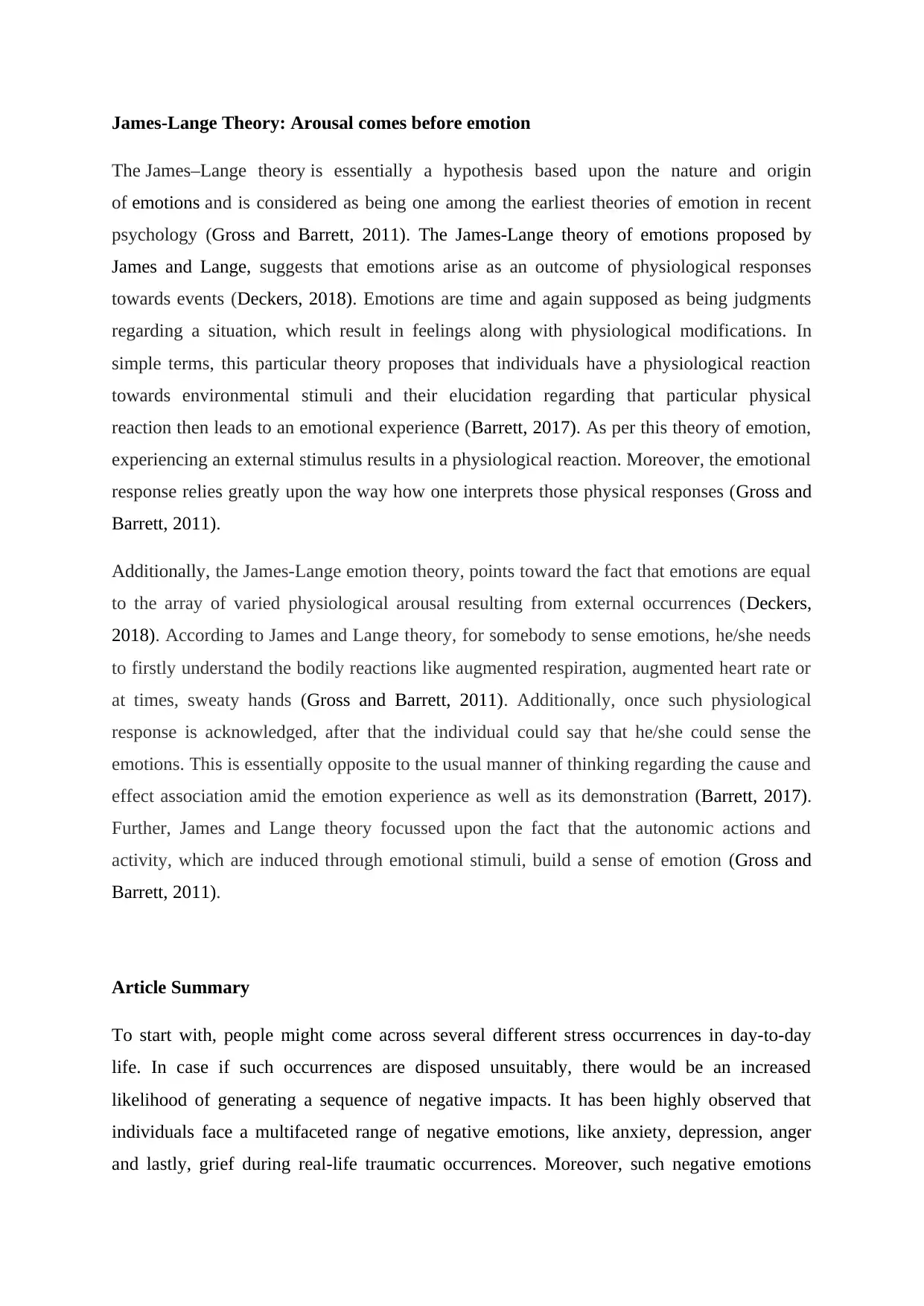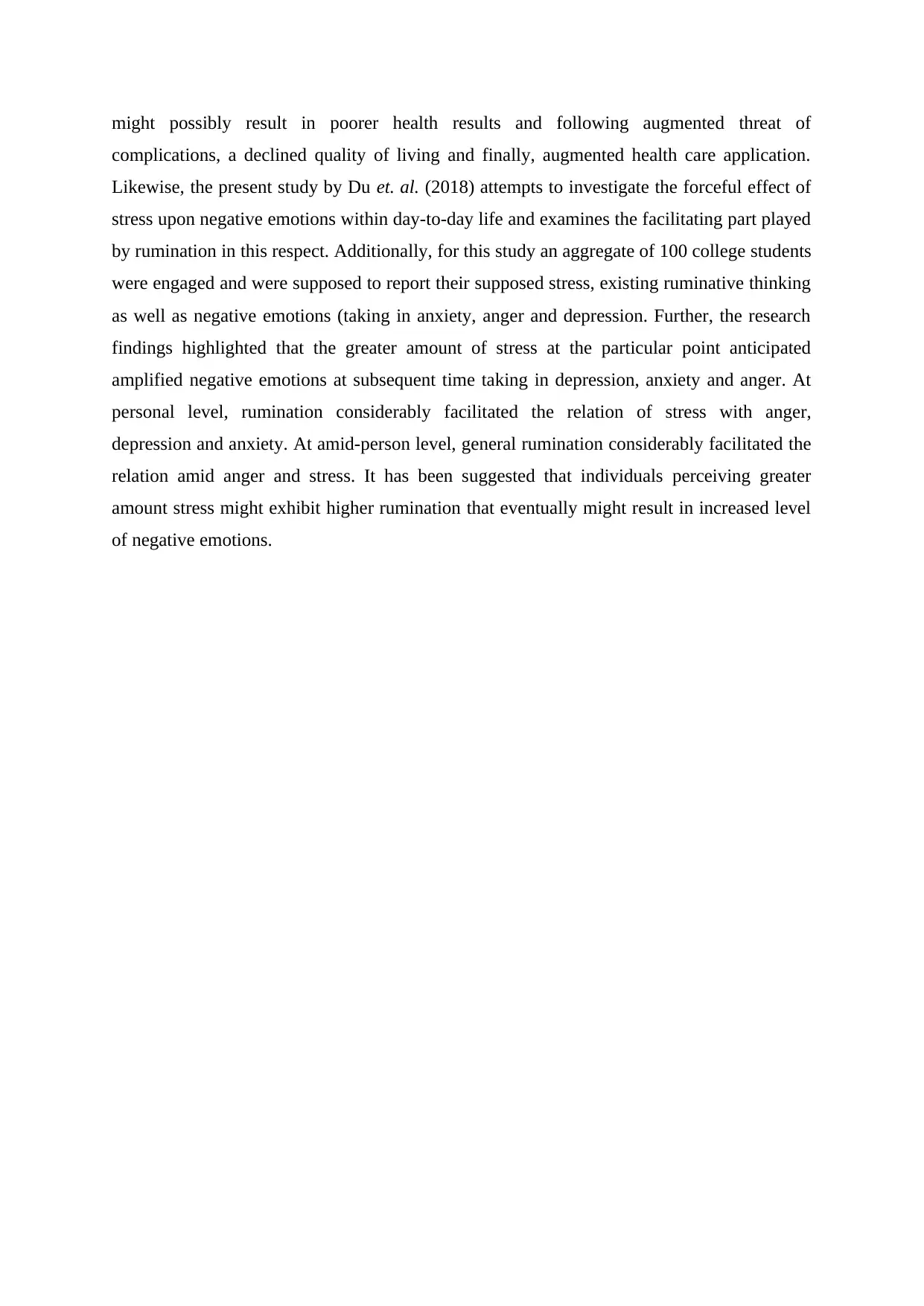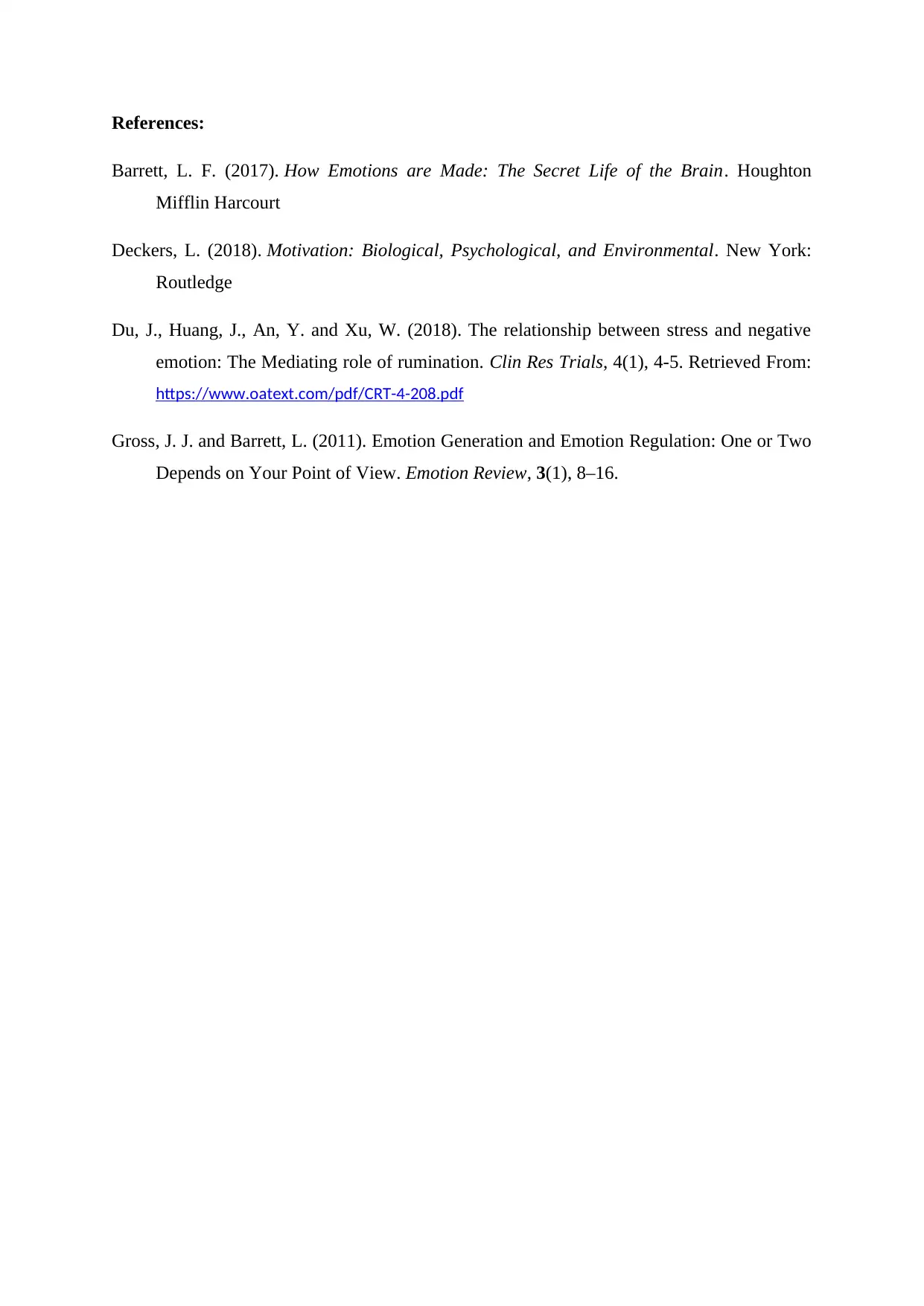Psychology Assignment: James-Lange Theory, Stress, and Emotion
VerifiedAdded on 2022/09/22
|3
|742
|13
Essay
AI Summary
The essay explores the James-Lange theory of emotion, which posits that emotions arise from our awareness of our physiological responses to emotion-arousing stimuli. The essay begins by defining the theory and explaining its core concepts, emphasizing that bodily arousal precedes the subjective experience of emotion. It contrasts the James-Lange theory with other theories, such as the Cannon-Bard and Schachter-Singer theories, which offer alternative explanations for the relationship between physiological responses and emotions. The essay also discusses the connection between stress and negative emotions, referencing a study that investigates the impact of stress on negative emotions and the mediating role of rumination. The study's findings highlight how increased stress can lead to higher levels of negative emotions, and how rumination can amplify this effect. The essay concludes by summarizing the implications of the James-Lange theory in understanding the complex interplay of emotion, stress, and health, and emphasizes the importance of recognizing and managing physiological responses to maintain emotional well-being.
1 out of 3




![[object Object]](/_next/static/media/star-bottom.7253800d.svg)